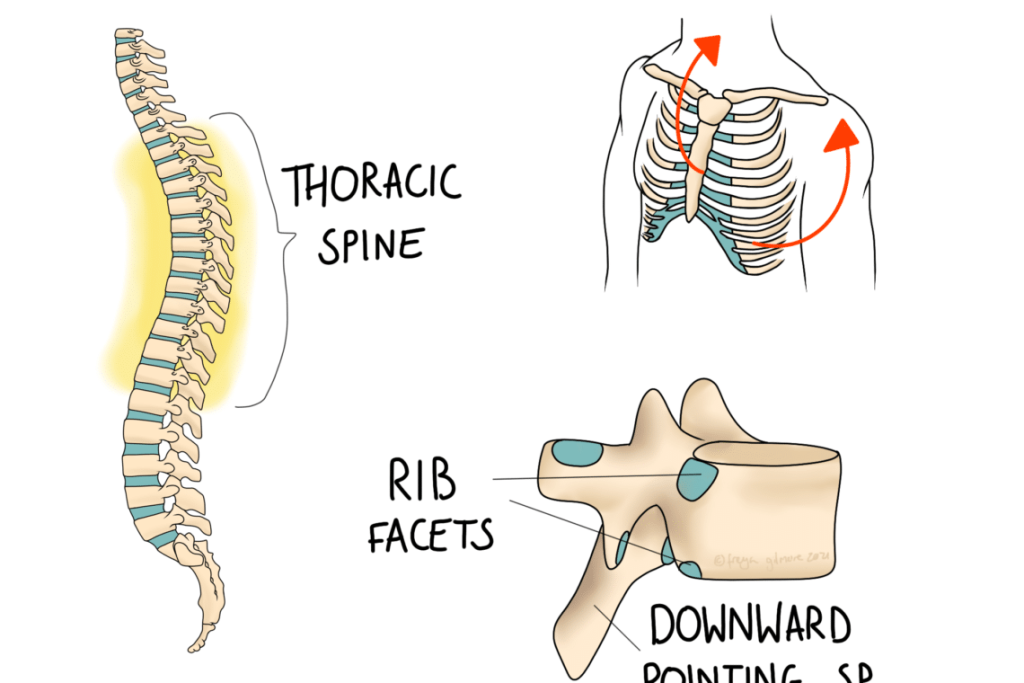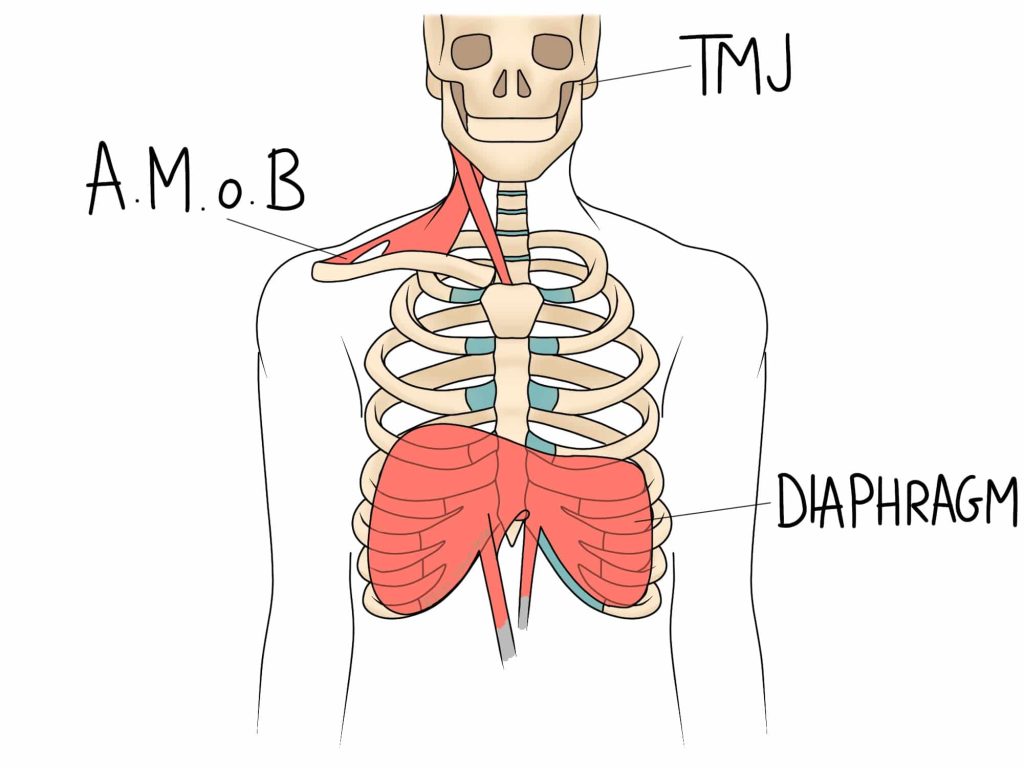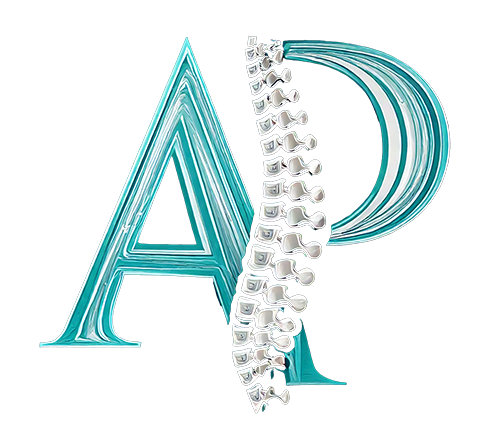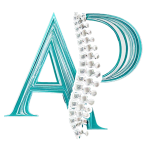The Thorax
Everything between the base of the neck and the top of the lumbar spine is within the thorax. This includes the upper back, ribs, and lungs.

The Upper Back (Thoracic Spine)
A lot of people have quite a “rounded” posture. When sitting they are somewhat slumped, and their shoulders come forwards. Alongside this, the thoracic spine is often rounded (or kyphotic) too. These are side effects of the demands of modern life. We have a lot of reasons to sit still and work on things directly in front of us, and not enough time to move. Over time, this can encourage the rounded posture, which becomes compounded by the local muscles. The pectoral muscles are a good example. These muscles bring the shoulders forward when they contract. Likewise, they become shortened when this position is the default. This makes it harder to get back to an upright posture.
Despite all of this, we often don’t notice these changes in ourselves immediately. They do take time to develop, but they frequently do not come with local symptoms. Instead, other areas compensate for the lost movement. This too can be asymptomatic until something goes wrong- often in the neck or lower back.
The Ribs and Breathing Mechanics
There are twelve pairs of ribs in the thorax, and they all work slightly differently. The upper ribs move in a “pump handle” fashion, lifting forwards and up. The lower ribs flare out like a bucket handle. The way the ribs attach to the spine is quite uniform, but their attachment at the front is variable. Ribs 1 to 7 attach directly onto the sternum, and 8-10 attach indirectly via cartilage. The last two (11 and 12) are short, and they do not attach to the front at all, which is why they are called “floating ribs”. Costochondritis is a musculoskeletal cause of chest pain. Here, the rib joints at the front of the chest become inflamed and painful.

Some people have an extra rib or two at the lowest bone in the neck. These are called cervical ribs, and can be associated with problems like thoracic outlet syndrome. Most people will never know they have them, as they typically require imaging to find them. We expect that the majority of people with cervical ribs will not develop any symptoms either, but if you have a family history of problems like TOS, there could be a connection.
When breathing efficiently, the shoulders should stay still and the tummy should move smoothly along with the chest. Inefficient breathing almost always involves the diaphragm. You can read more about that in our post about tension. Similarly, if you find that your shoulders click or clunk, there may be a problem of the shoulder blades running awkwardly over the ribs. This is often a postural problem or a muscular imbalance, and we can help.
The Thorax and Osteopathy
So despite often being asymptomatic, the thorax is an area frequently involved with problems. If you have neck pain or headaches, shoulder or lower back pain, you might benefit from an assessment. If you struggle to manage your stress, or find yourself grinding your teeth, there may be changes to make to your breathing, and your osteopath can help.
We will assess your body as a whole, observing how the different areas influence each other in your case. This allows us to get to the bottom of the problem, and gives us a better chance of helping you become pain free in the long term.

